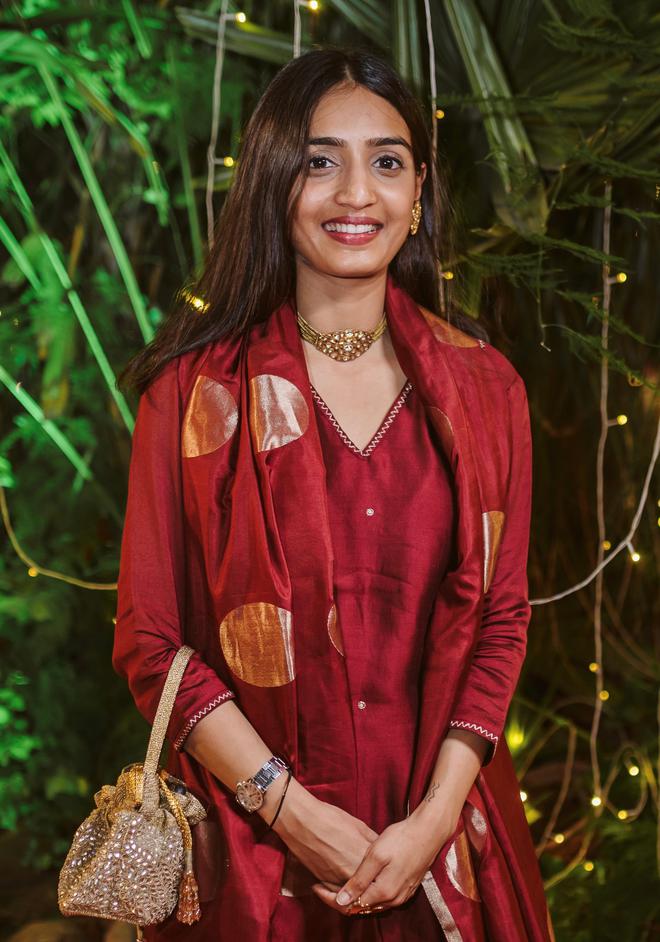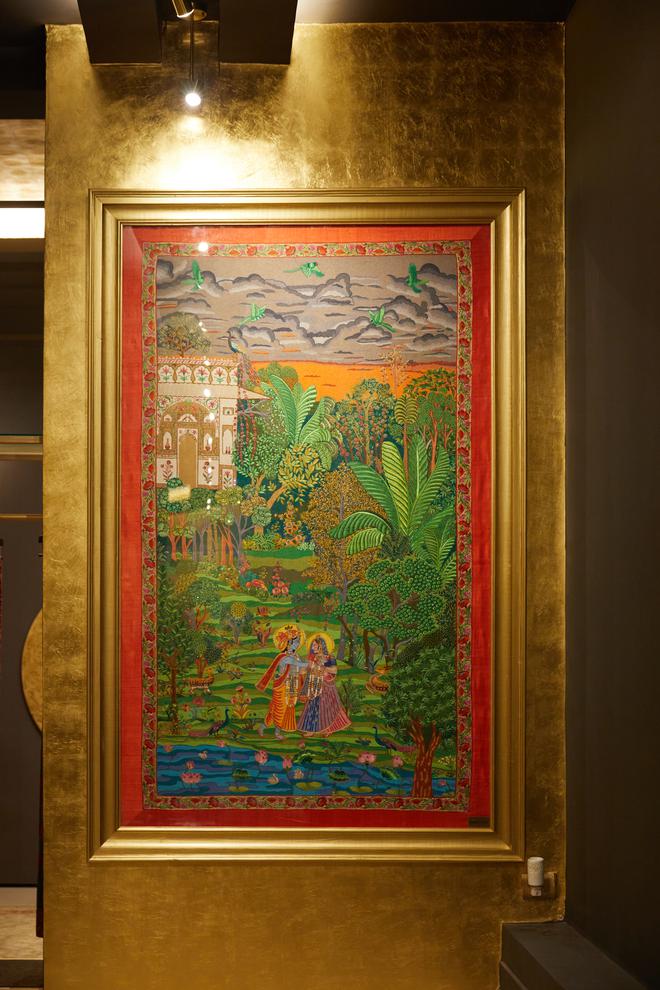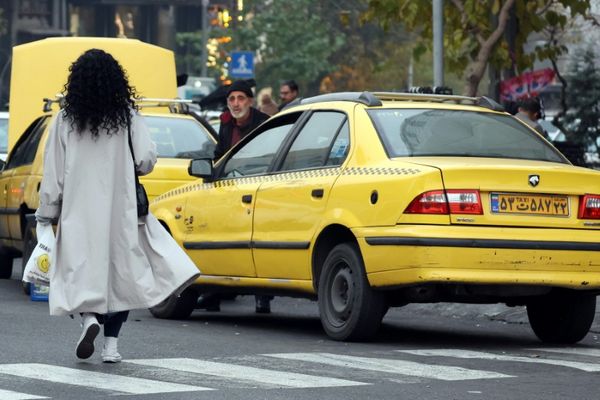At a wedding in one of India’s biggest industrialist families in 2019, 80 intricately embroidered frames depicting Lord Krishna and Radha in a scenic setting were gifted to guests. Not many know but these were courtesy Khushi Shah, founder of apparel brand Shanti Banaras. A segue from their usual offerings of handlooms and textiles, the Banaras-based brand says this is the biggest order of their latest venture: hand embroidered Pichwai tapestries. “When we displayed these pieces in our Delhi store that launched last year, we got orders from many, including NRIs. As a result of our work with a few clients helping them furnish their homes with handwoven fabrics, we decided to begin our own home line of hand-embroidered artworks,” says Khushi, of the new range crafted by artisans from Benaras.
Zardozi meets Swarovski
The collection of five hand-embroidered artworks that are currently on display have been crafted in coloured silk — a 170 colours of threads to be precise. “The borders have zardozi work and velvet in the corner. Further, we have used Swarovski and embellished it with various jewels to complete the look.” The artworks, she says, are going to be a continued offering by the brand.

Drawing from Rajasthan’s 400-year-old art of Pichwai, the tapestries depict landscapes, luscious trees in shades of green and yellow, lotuses, blue rivers, architecture, peacocks, and more. Explaining one of her first unique works for a client, she says it “was a Pichwai of Lord Shreenath, Ganesha and Kartikeya. You won’t find the three of them easily in one painting. It was just our vision that we ideated.” But why Pichwai? Khushi says her family being a firm believer in Lord Shrinath aside, the traditional art form emerged at the Nathdwara temple where there are intricate paintings dedicated to the deity. “Those paintings naturally gravitated to us and we decided to give our own ‘Shanti’ spin to them. The uniqueness of our artworks lies in details as our hand-painted Pichwais have intricate embroidery,” she says, adding that each piece is conceptualised by a team of designers, including a weaver, and dyer, among others.
Behind the art
Khushi says there is a unique story behind each artwork. For instance, their most prominent piece — the classic Boat of Love — is divided into two scenes. “The upper half of the painting depicts Lord Krishna and Radha enjoying the sunset and city views in a boat with their sakhis while the riverbank is demarcated with architecture indicating the palaceembankment. In the bottom half, the couple is hidden from the outside world by the jungle’s lush greenery.” Another tapestry close to her heart is Shri Shringaar, wherein you can see Lord Ganesha and Kartikeya welcome Shrinathji and perform his shringaar. “Almost 97 resham threads and Swarovski garlands were used. It’s very finely laid out and depicts a picturesque lake with a foyer at the front, and is filled with traditional Pichwai motifs like cows, lush green jungles, as well as a palatial house,” explains Khushi, who is now looking at putting a contemporary touch to traditional Indian embroidery in new artworks.

Chalking out the painstaking process behind creating this art, she begins by addressing how one of their first pieces took about nine to 10 months. After the ideation phase, the piece goes for sketching followed by a graph that is made to finalise the art. “The team then sits down and matches the colours. This is only the back-end work that is done before the piece is actually stretched out on a khaka for embroidery that takes up to 2-3 months. The artisans are able to embroider only half a metre a day due to its meticulous nature. After this, the piece is sent for finishing and extra backing, a process that requires patience,” says Khushi, admitting that since Pichwai was never their forte, and Banarasi was all they did, “a few factors had to be figured out such as the measurements, finding a group of artisans to work on, having a full team of designers, and types of colours required — curating all of which took time. Now it takes one-two months to complete each of the embroideries.” As well as being available for sale, Khushi also offers customisation. And as for the apparel section, handloom enthusiasts can look forward to hand-embroidered bridal lehengas, as well as a menswear collection including shawls and sherwanis, all to be launched soon.
₹5 lakh onwards. @shantibanaras on Instagram







